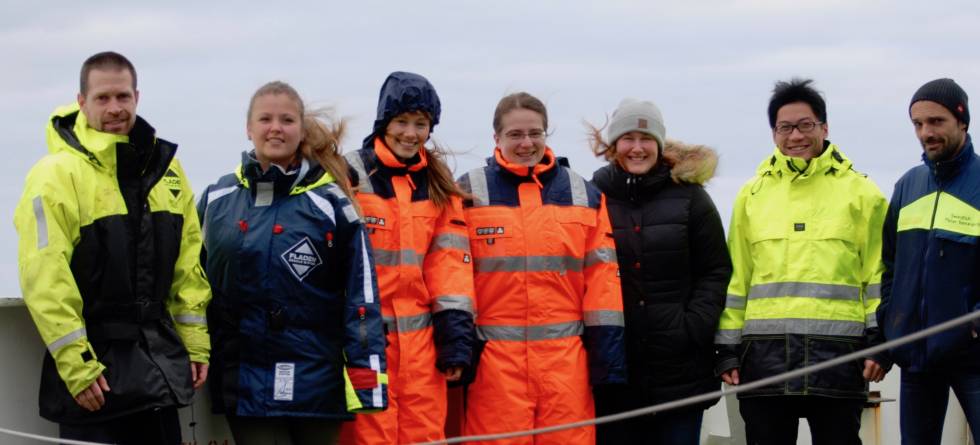
By Silje Skjelsvik, masterstudent at the Geophysical Institute, UiB
The ship is covered in snow and ice, the waves are crashing over the deck and we are on our way to the next CTD station. Currently at 70 degrees north we are trying to finish a section of CTD and XBT casts, heading towards the ice edge of east Greenland. We can assure you that the closer we get – and the colder the water samples – the colder our fingers get.
The Iceland Greenland Seas Project (IGP) has begun the journey of Leg 2; the ultimate exploration of the mysterious north. We are on a mission to reveal the truth of hidden facts and treasures in the ocean and atmosphere in the Iceland and Greenland Seas. While writing we are experiencing our first cold air outbreak (CAO). Constant heavy snowstorms and brutal waves: exactly what we are looking for.
We are lucky to be a part of this pioneering voyage. Rough conditions make it hard to reach our main target area: the ice edge of east Greenland. Almost all previous cruises have been during the summer months, and further away from the ice. The lack of wintertime data along the ice edge is therefore a key reason for us to be here making physical and chemical observations.
By studying how the ocean’s mixed layer varies during CAOs, we hope to find the origin of the densest water masses that passes though the Denmark Strait and better understand the ocean-atmosphere interaction. Further, we want to figure out where and how the different deep-water layers form and to what extent they contribute to the dense overflow of the Denmark Strait and the Atlantic Meridional Overturning Circulation (AMOC).

Additionally, we are cooperating with the meteorological team of the IGP who are doing a flight campaign based in Akureyri. They are flying at a minimum safe altitude of 15 meters above the ocean, to measure the high heat fluxes along the ice edge and over the Iceland Sea. Planning is essential in order to do these flights. Many hours are therefore spent studying weather charts. So when the snow showers in Akureyri finally pause, some chosen meteorologists are lucky enough to embark on a turbulent flight.
Participants from Bergen in the meteorological part is Heidi Golid and Kjersti Konstali (master students), together with Harald Sodeman,Thomas Spengler, Lukas Papritz, Alexandra Touzeau og Erik Kolstad.
The never-resting ocean is otherwise in continuous motion. You may ask: who wants to risk their life flying dangerously close to the rough ocean? Or who the hell wants to be out on the Nordic Seas in winter, chasing storms? Well, we do, and we love it. We are in our true element, working on the water we sample and analyse, and in the weather we are measuring. Instead of looking at the computer all day in our office (or for me: study hall), trying to understand Nature, we are able to just walk outside the heavy steel door from our lab and open our eyes. What we see is the vast, blue and green-ish ocean, reaching all the way to the horizon. In one moment we are surrounded by sea ice and seals – sometimes the northern light is dancing above us – while in another moment the sea is so rough that we are thrown out of our bunks. Sea-sick or not, we are exactly where we want to be, doing what we love.
I would say we live the (re)search.

